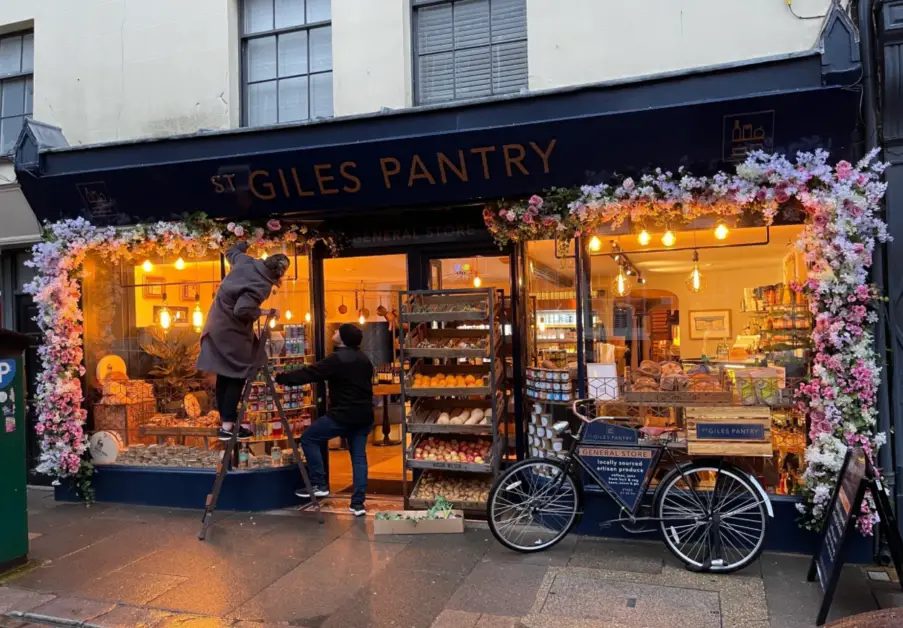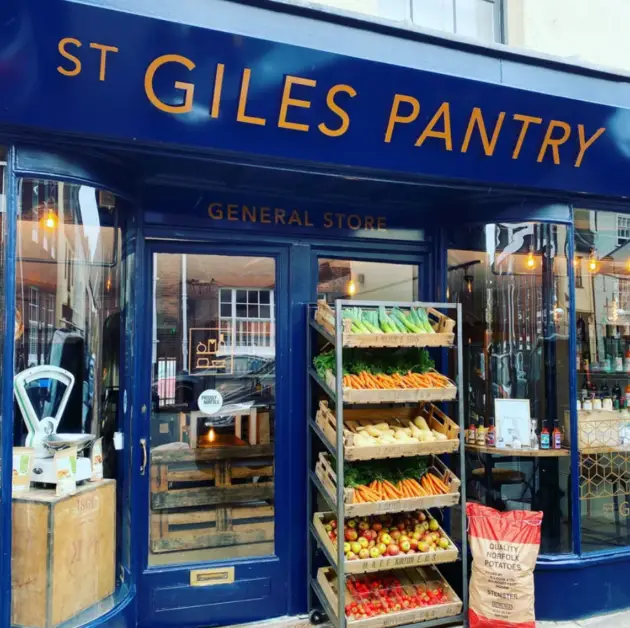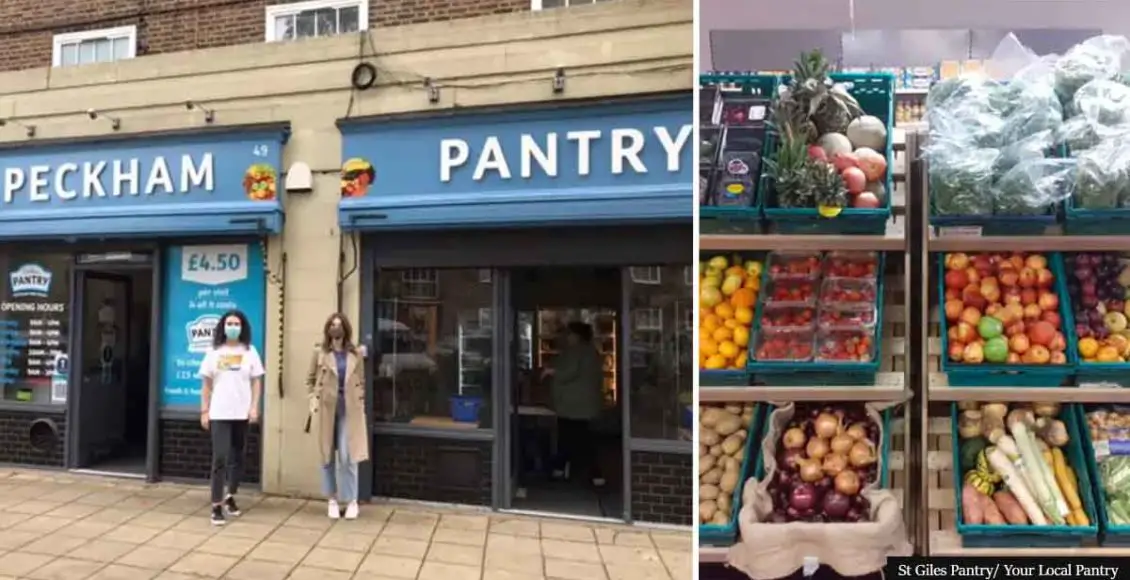Community pantry manager says the next six months will be “challenging” as the demand for food support is on the rise in the UK.
- Data from the Trussell Trust shows a dramatic increase in families seeking food support.
- Meanwhile, about two-thirds of people living in food poverty do not access support from food banks.
- According to community pantry managers, while food banks provide long-life staples, community pantries give clients a choice of fresh food for a small weekly price.
According to David Adams of London-based charity St Giles Trust, the next six months will be “challenging” when it comes to food insecurity in the UK. His concerns come as data provided by the Trussell Trust shows that in the last four years, the number of families seeking emergency food support has significantly increased.
As Unilad reports, Adams also manages St Giles Pantry – a network of community pantries that offer support for people struggling with food insecurity. He comments:
“I think the next six months is going to be a challenging six months. I think sadly it will shine another light on the level of people living in poverty, working in poverty.”

Compared to food banks, which offer free basic groceries for families in need, community pantries are smaller, more local, and appear to be far less advertised. Elena Vacca, co-ordinator for Stockport-based community pantry network Your Local Pantry, claims:
“Of course, there’s a need for food banks and emergency provision, but with the pantries, it’s more about that choice element. You come into a shop, you pay £3.50, and you get your choice of items.”
Most community pantries operate under a membership model. The clients pay a weekly fee, for which they are able to buy fresh produce they would typically find well out of their budget in a regular supermarket.
Community pantries give people “a better option of preparing a fresh meal.”
Essentially, community pantries sell excess stock provided by supermarkets and distributors. They often offer a choice of fresh fruit, vegetables, and meat. On the contrary, food banks supply long-life staples.
A member of St Giles’ Pantry explains:
“In the past, I was using a food bank but found it difficult at times and not helpful to my situation. This gives you a better option of preparing a fresh meal together. When you receive a bag of food from a food bank it’s hard to think about putting a meal together as you don’t always know what you’ll receive, and [it’s] always lots of tins.”
Lovely donations from the Cottam Community Association and the tool shed workers at @BAESystemsInc Samlesbury
Thank you 🙏
These will help feed some of the most vulnerable in our communities#beingthere #preston #community pic.twitter.com/JNspj7fAL3
— INTACT (@IntactCentre) September 28, 2021
Vacca believes community pantries are a halfway step between expensive supermarket shopping and free food banks, as they emphasize the importance of choice for less. She says:
“It’s like a little shop, which is such a nicer feel than getting a handout rather than a hand up.”
Adams adds:
“The idea is that if we’re going to do this we’re going to provide society’s most vulnerable that need our support with dignity. Just telling people, ‘you go choose your items, you do your shopping, here’s a basket, here’s a trolley, go do your own shopping.’ It sounds so simple, and it is so simple, but it’s so empowering.”
What makes community pantries different from food banks is the sense of… Well, community.
Having someone understand and empathize with your struggles is incredibly important when it comes to severe issues such as food insecurity. That appears to be exactly what community pantries are trying to achieve by helping their clients with various tasks, including meal planning, budgeting, housing, and employment.
Vacca notes:
“It’s not just that you come and get food, it’s a social event. You meet your friends, you meet other neighbours, while also if you need any other support financially, it can be a point of contact and a place where people are able to discuss that.”
However, many people still fear opening up about their financial concerns. Adams points out:
“[People will say] ‘oh isn’t this for the homeless.’ That’s far from, sadly, the situation where we’re at, and I think some people have the view that there’s always someone worse off, someone else should benefit, we can just about get by…
When you change that narrative, when you say they’re going to contribute that £3.50, those barriers drop.”

Vacca adds:
“By having community pantries it definitely takes away the stigma, because they’re paying into a club, like a co-operative, so it’s not just that you’re coming down and getting free food.”
Approximately two-thirds of people living in food poverty do not access support from food banks.
Vacca explains:
“A lot of the times people that are in poverty aren’t just folks that are unemployed but are those that are on low incomes that are working 40 hours weeks, and those are the ones that are falling through the cracks of support.”
Welcome to St Mary's Pantry Grassendale in Liverpool, open today! pic.twitter.com/bmpC4vn2Ln
— Your Local Pantry (@yourlocalpantry) September 8, 2021
Commenting on the fact that many people hesitate to ask for help, Adams says:
“We have to tackle the root cause of why, so we use the food pantries as an engagement tool so that we can actually start building the trust and the relationships with the individuals, so then we’re able to start providing the right support.”
Both Adams and Vacca are concerned that even more people will struggle with food insecurity in the coming winter. Your Local Pantry’s co-ordinator stresses:
“Normally we have about 10-15 new members sign up per week, whereas last week and the week before we had 30 new members for the Stockport pantries, so you can see already that impact.”
Meanwhile, members of the community pantries describe them as a “blessing” and a “lifeline.” Some even claim that they have been able to begin paying off debts and household bills thanks to the savings they’ve made on their food shopping.
As Unilad concludes, “with a difficult few months ahead, the resources offered by community pantries have never been more vital.”


